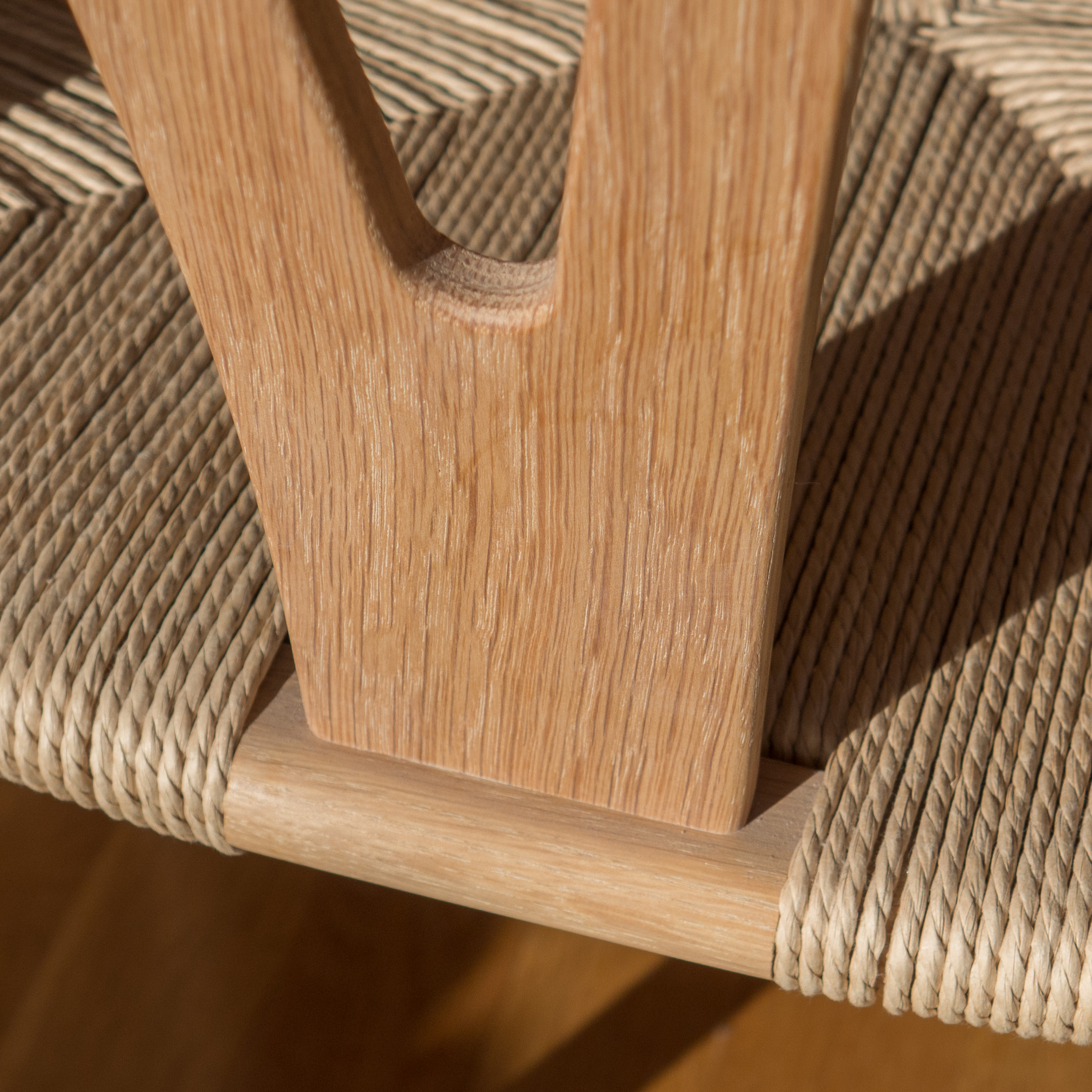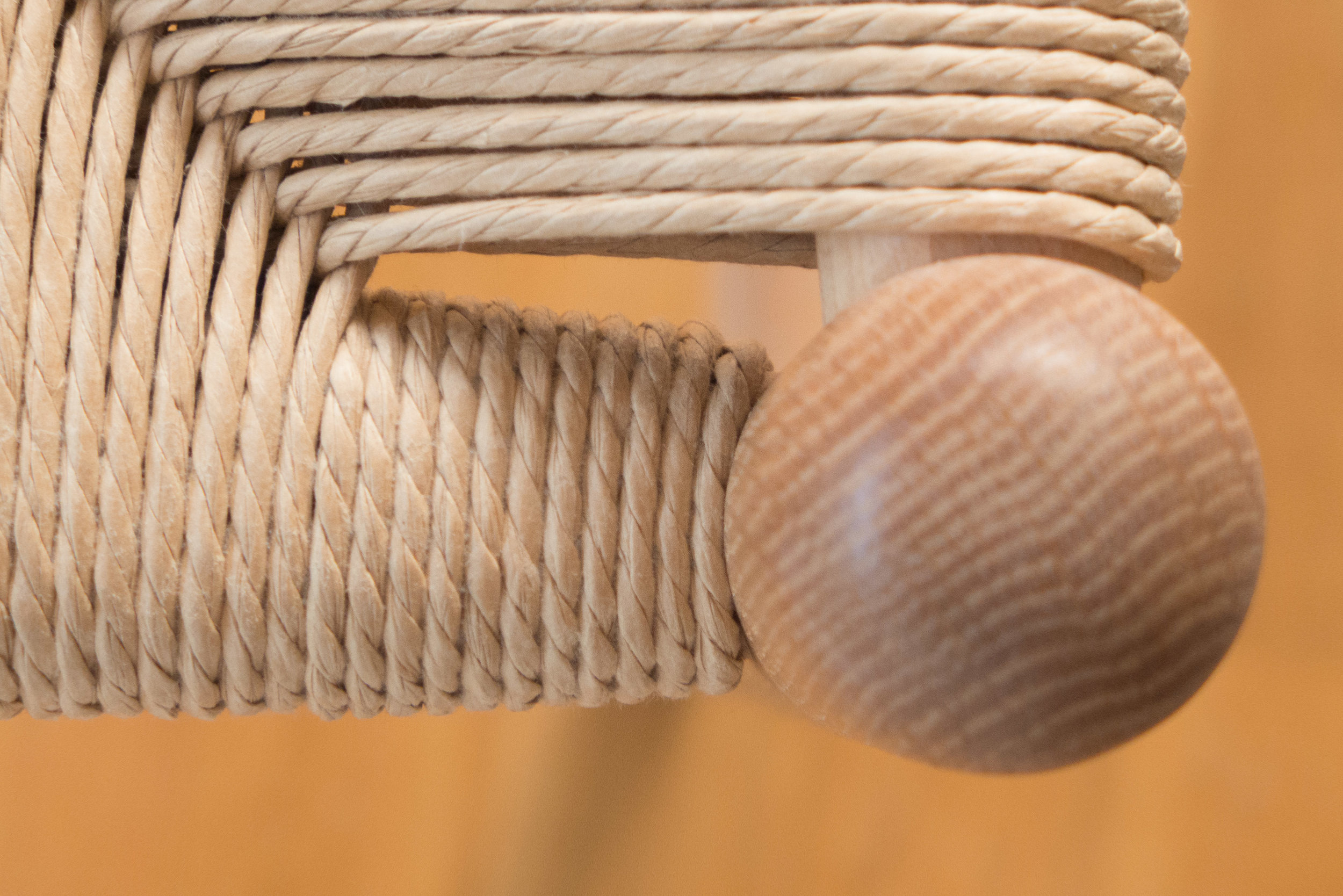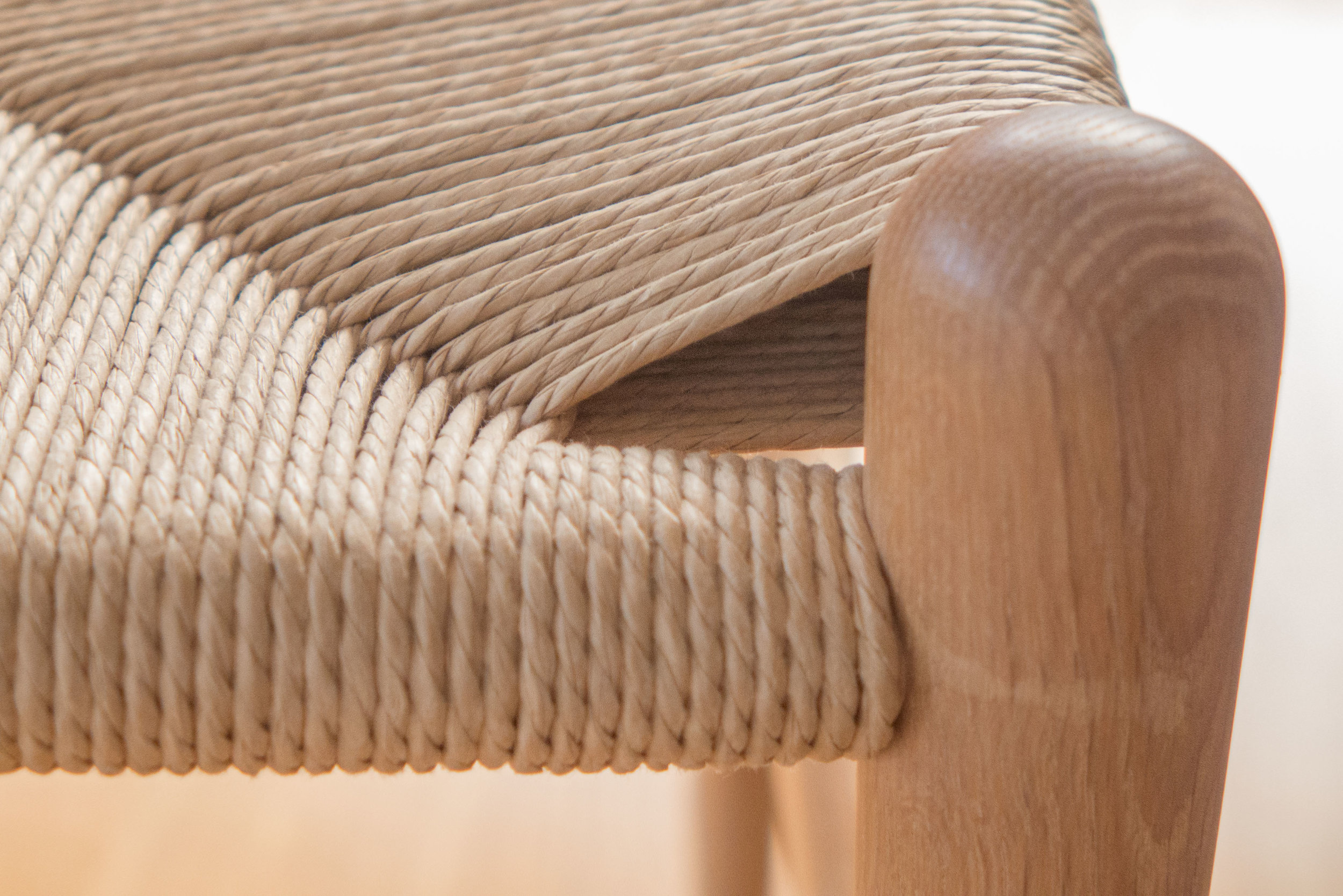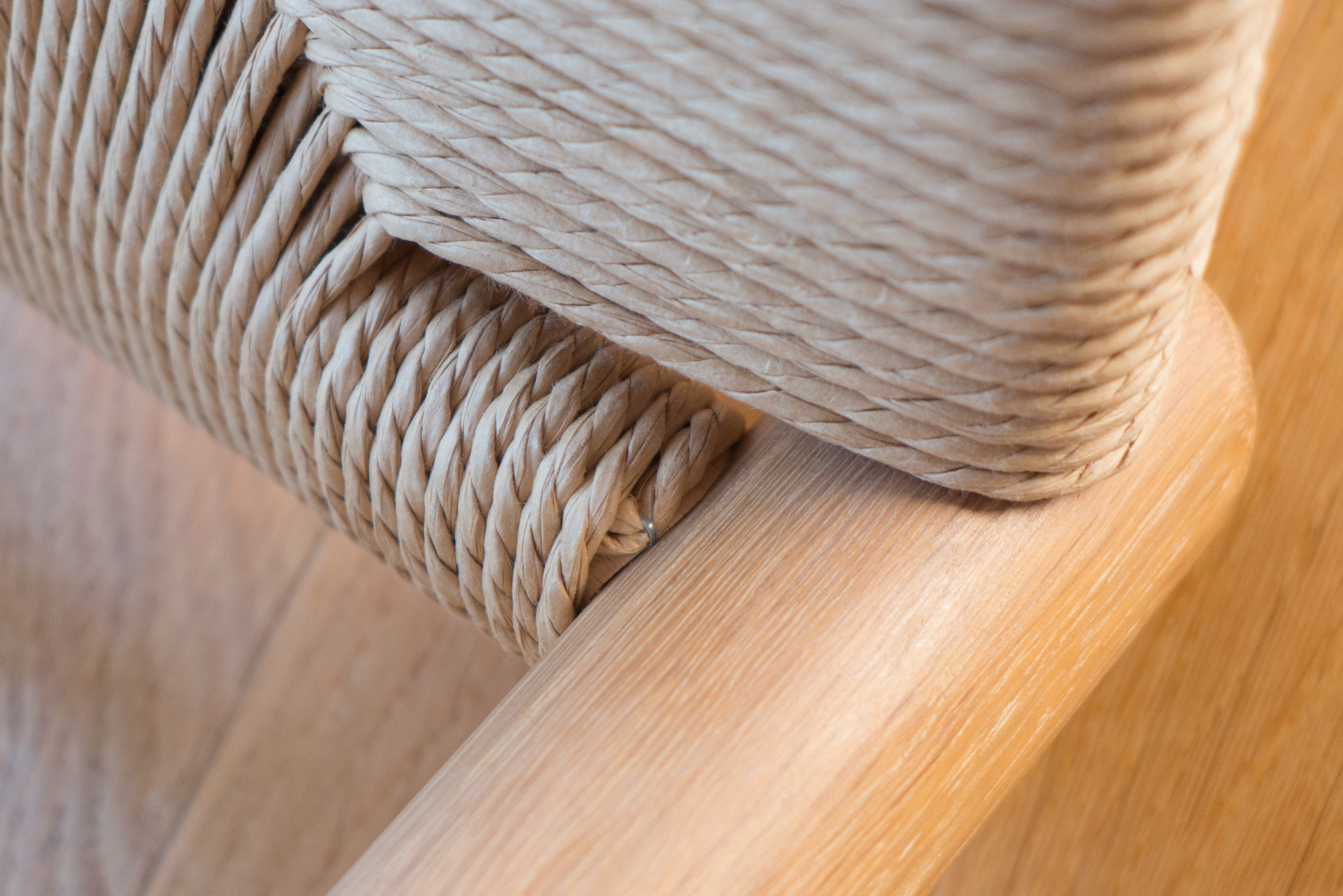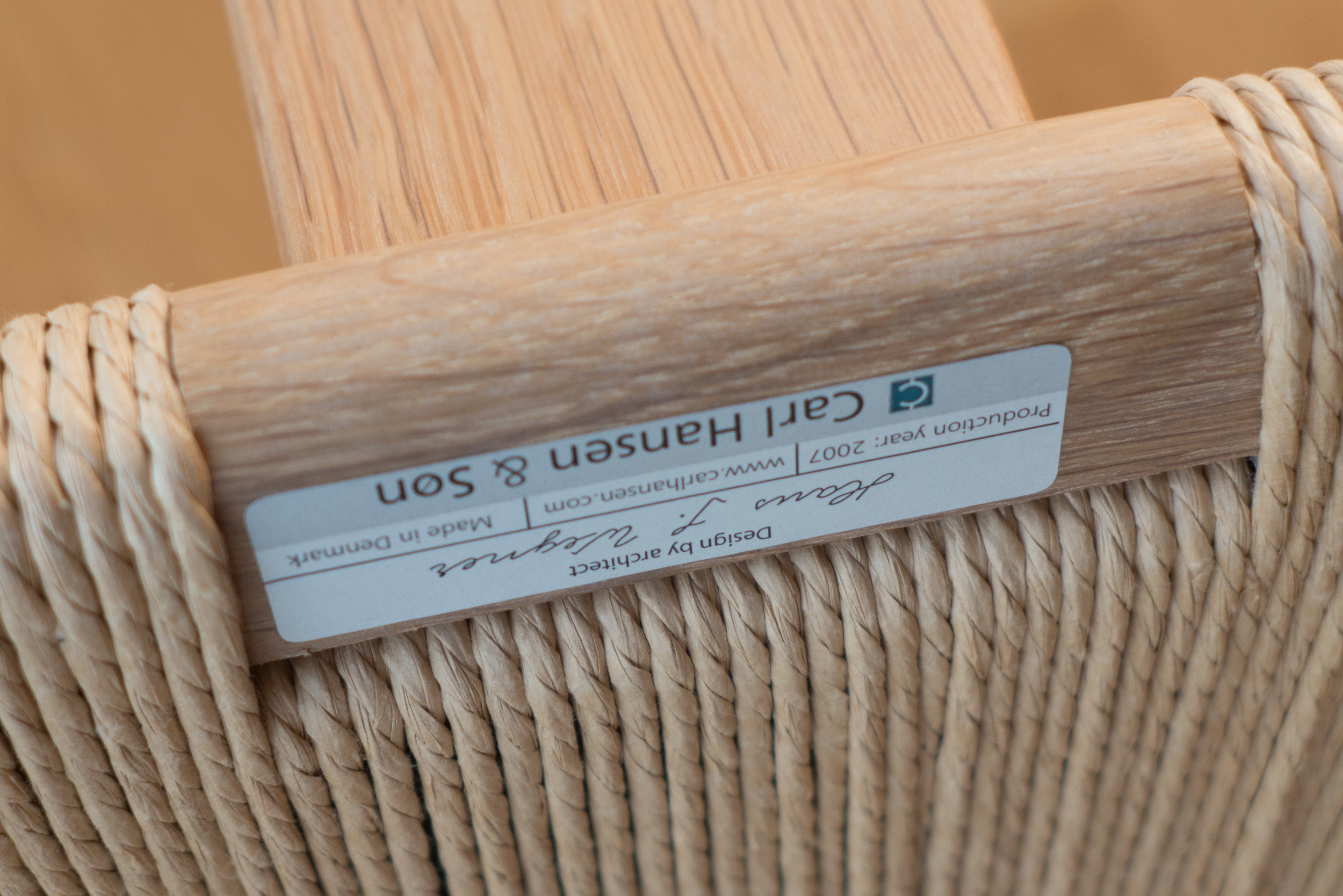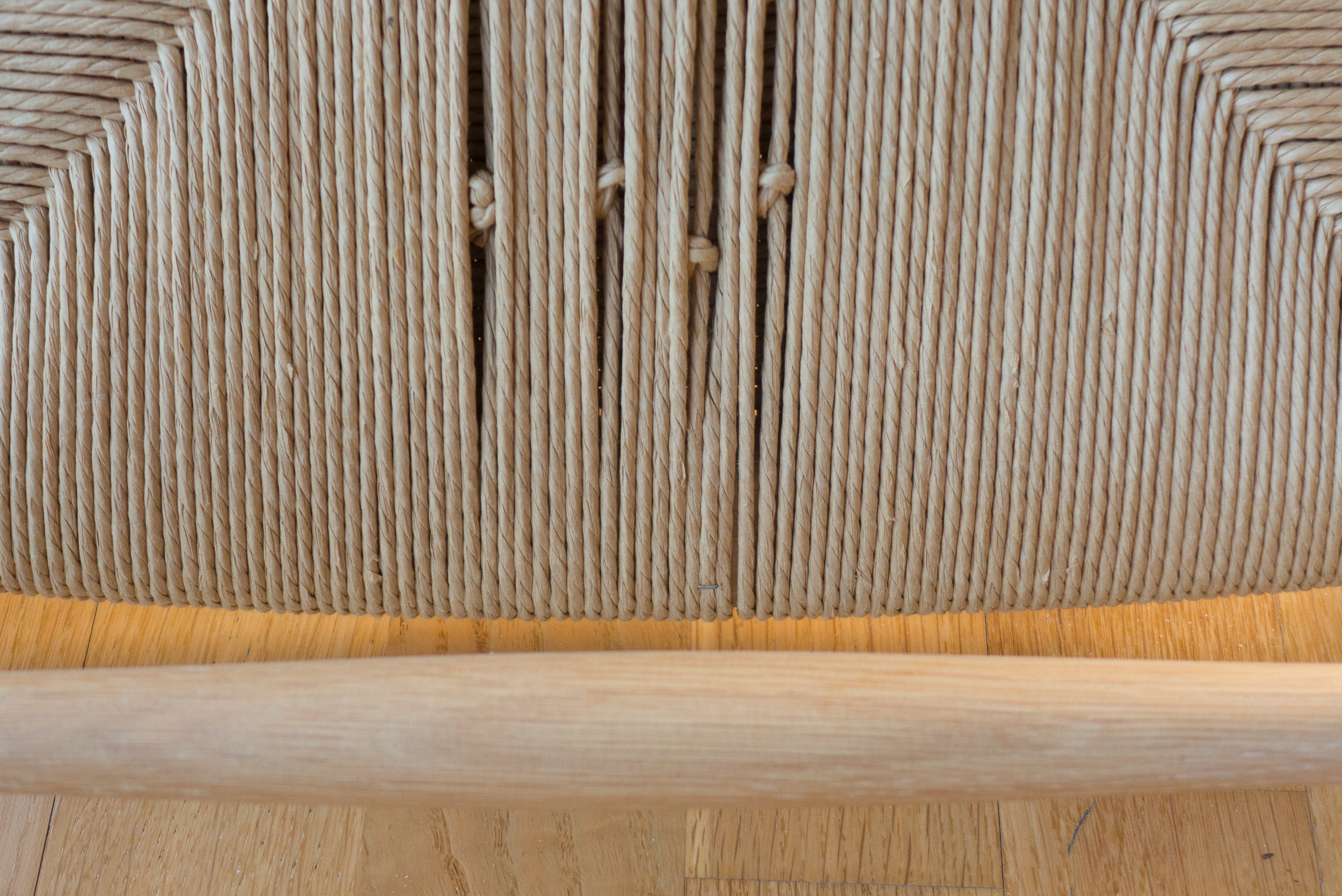The oval seat of the CH88 is deceptively simple. It is made in cut and shaped plywood which has a hollow shape and a gentle rounding of the front edge.
In cheaper or less well-designed chairs, plywood seats can quickly feel uncomfortably flat and rigid or unforgiving and the front edge can stick into the back of the legs immediately below the knee. This is certainly not a problem with the CH88, which is extremely comfortable, and there are several options ... the seat can be simply stained or painted, or it can be upholstered in fabric or leather and that makes the design remarkably flexible ... this could be a practical, hard-working chair in a business meeting room or could be used in the most sophisticated and formal dining room.
The metal frames linking the legs are welded together for strength and form a strong solid support for the seat but there are also plastic buffers or spacers that fix the legs to the plywood of the seat and control it's rigidity, giving the chair an appropriate level of flexibility and movement … otherwise sitting on it could feel like plonking down on a rigid bench.
When seen from underneath, it is obvious that the frame extends well beyond the edge of the seat and that the legs, both at the front and the back, are straight and vertical. In part this is why the chairs can be stacked but it also creates a more comfortable angle and spatial relationship between the seat and the back. If a chair has a solid back at a fixed angle then it dictates the angle of the sitter's spine unless they perch forward on the edge of the seat. In the CH88 you can decide how far back you sit in the seat ... by moving the base of your spine back into the chair you adjust the angle of your back and adjust, even if it is by a small amount, where the back of the chair supports your spine. We sit down so often and sit on so many different chairs that we do it automatically and rarely think about what we are doing but we do notice when a chair is badly designed and gets these angles and relationships wrong. Wegner is praised for the appearance and the quality and the style of his chair designs and it seems slightly inane to point it out but, above all, his chairs are also remarkably and consistently comfortable.
There are a number of colour options for the back and the seat and the steel frame if it is powder-coated - Carl Hansen's flagship store in Bredgade in Copenhagen has a display at the moment that includes a CH88 in a striking maroon - and the back rest, if not painted, comes in beech, oak or smoked oak and, as always with pieces from Carl Hansen, there is a choice of soap finish, lacquer/oil or white oil.
For English readers this choice of finish for wood may be slightly baffling and seem like an indulgence or an unnecessary complication but it really is worth giving it very careful consideration, not only in terms of how you want to use the furniture - how much dirt and how much staining and cleaning might be involved - but also the wood treatment has a profound effect on the appearance. So, for instance, white oil has a soft matt finish and gives oak the look of English furniture in fumed oak that was fashionable in the 1920s and 1930s.
The CH88 is strong but light and can be stacked and is remarkably comfortable as a dining chair, for conference-room seating or as a work/desk chair.




